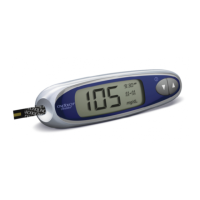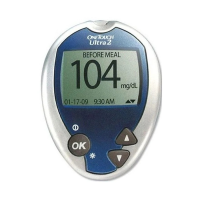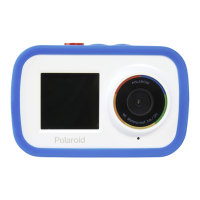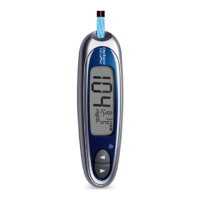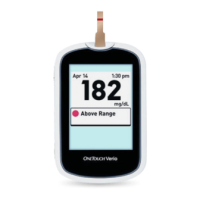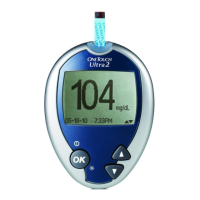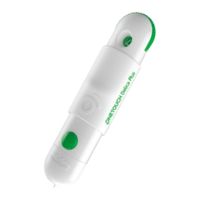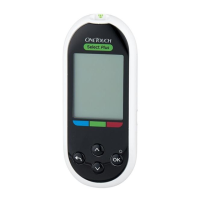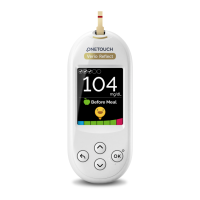12
TESTING YOUR BLOOD GLUCOSE
Read your result on the meter
Your blood glucose level appears on the display, along with the unit of measure, and the date and time of
the test. Blood glucose results are automatically stored in the meter’s memory.
Error messages
If you get an ERROR message on your screen rather than a result, see Troubleshooting in Section 8.
After getting a result
Once you have read your result, you may:
• Attach notes to this result if the ags/comments feature is on, see Section 4, Attaching ags or comments to your results, or
• Review your meter memory by pressing
to go to MAIN MENU, see Section 5, Reviewing past results and averages, or
• Turn the meter o by removing the test strip.
Removing the used lancet
Remove the lancing device cap. Place the lancet protective cover on a hard surface and push the
lancet tip into the cover. Remove the lancet and place it in a container for sharp objects. Replace the lancing
device cap.
Disposing of the used lancet and test strip
It is important to discard the used lancet carefully after each use to avoid unintended lancet stick injuries. Used
test strips and lancets may be considered biohazardous waste in your area. Be sure to follow your health care
professional’s recommendations or local regulations for proper disposal.
CAUTION: If you test at the low end of the operating range (43°F) and your glucose is high (over
180 mg/dL), the reading on your meter may be lower than your actual glucose. In this situation, repeat
the test in a warmer environment with a new test strip as soon as possible.
WARNING: If mg/dL does not appear with the test result, contact LifeScan Customer
Service at 1 800 227-8862 (7 days a week, 8 a.m. - 10 p.m. Eastern Time). Use of the wrong
unit of measure may cause you to misinterpret your blood glucose level, and may lead to
incorrect treatment.
(Example)
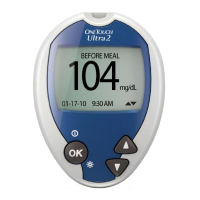
